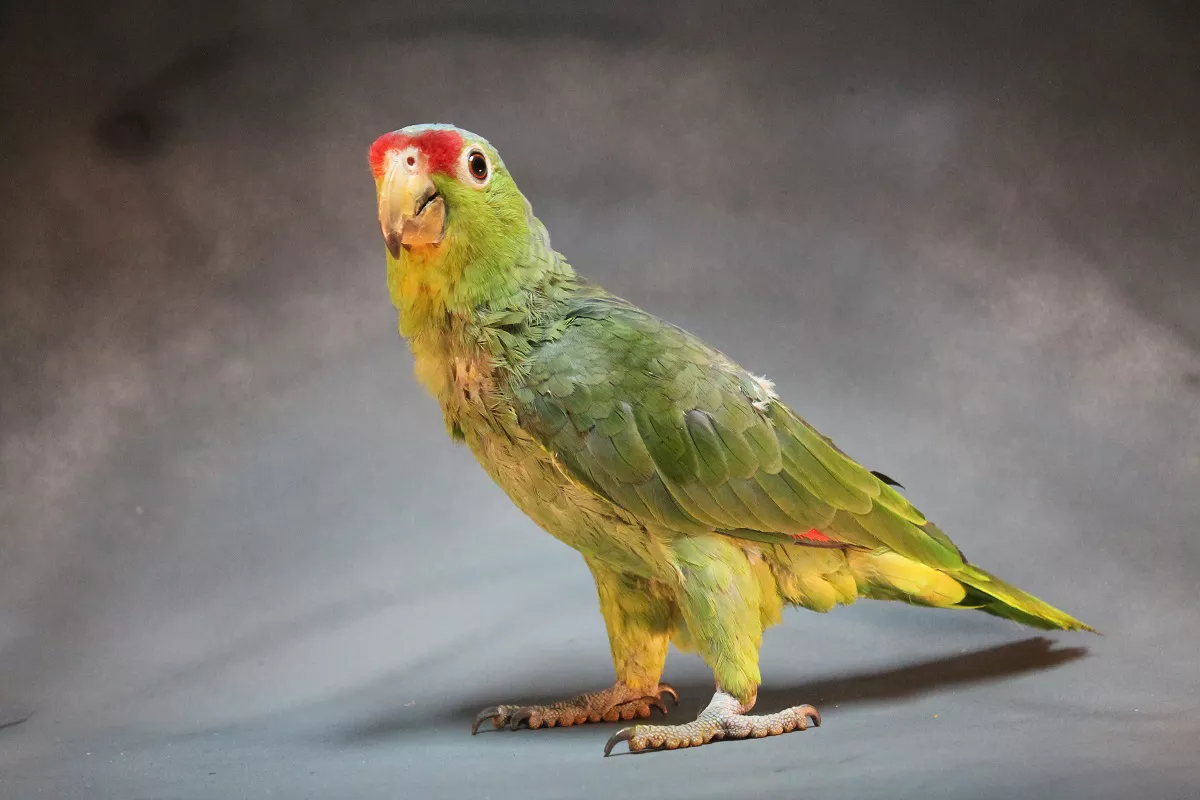The red-fronted macaw (Ara rubrogenys) is a parrot endemic to a small semi-desert mountainous area of Bolivia. It is a critically endangered species; it has been successfully bred in captivity, and is available, if not common, as a pet.
What does Red-fronted macaw look like
The red-fronted macaw is a smaller macaw with a body length of 55-60 cm and an average wingspan of 81.28 cm. They are the lightest macaws, weighing between 425-550 grams. The feathers of both sexes are similar in color. The body of the bird is roughly olive green. There are red feathers on the forehead, ear feathers and around the thighs, and there are scattered red feathers on the wings. There is a small amount of orange red on the curved edge of the front wing and the inner wing coverts, and most of the inner wing coverts are olive yellow. The primary feathers are a striking blue-green color, while the tail also varies from green to blue-green. The upper part of the tail is olive green, with some blue at the tip, the inside of the tail is olive yellow, the white bare skin near the face has several brown and black feathers distributed horizontally, the skin around the eyes is pale, and the beak is black.
Juveniles are green throughout their heads, beginning to show red spots at 6-12 months of age. Their wings are completely green with only some reddish feathers showing around the thighs.
Red-fronted Macaw habitat
It likes semi-dry valleys, and uses the vegetation of forests near the valleys as its activity range. It also often likes to fly to farmland near these valleys to forage. Live in the warm and dry valleys of Bolivia. The vertical altitude is 300-800 mm, the annual precipitation is low, and the vegetation is mainly thorny bushes and various cacti. Nests in burrows in river canyons and ravines.
Red-fronted Macaw living habit
Red-fronted macaws are usually found in pairs and can also gather in groups of up to 30 or so during the breeding season and occasionally up to 80 in nesting trees. They will fly to the foraging area early in the morning to look for food until dusk and return home. They are very noisy but not introverted. They spend a lot of time searching for food on the ground every day, sometimes up to 4 hours. Some locals call them “Loro Burro”, which means a bird so stupid that it can’t speak.
What do Red-fronted Macaws eat
Food consists of seeds and fruit, but since natural food is usually scarce, this species feeds heavily on crops, especially peanuts and immature corn. I also like various cacti in dry areas, as well as some wild fruits, berries, nuts and small insects.
Distribution area of Red-fronted Macaw
Distributed in the dry valleys of south-central Bolivia in South America, it is a local endemic species. South-central to the small area of northern Chuquisaca, east of the Bolivian Andes, north-east from south of Cochabamba and west of Santa Cruz. Mainly in the Rios Grande, Minsk, Chien and Picomayo valley systems. It is common locally, but numbers are declining.
Mode of reproduction
Most of them build nests and breed in caves on rock walls. Oviposition takes place from February to March. Each pair of adult birds lays eggs once a year, occasionally twice. About 1-3 eggs are produced in one breeding, but only one young bird may be brought up. Since the nests are mostly in the rock wall, the young birds are less likely to be caught by poachers.


 Facebook
Facebook  Instagram
Instagram  Youtube
Youtube 